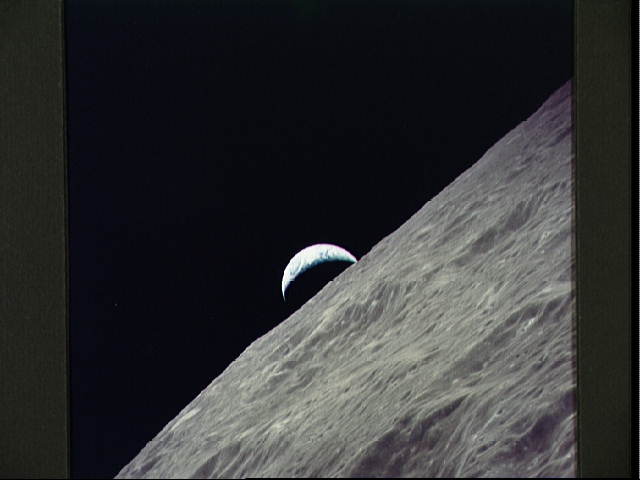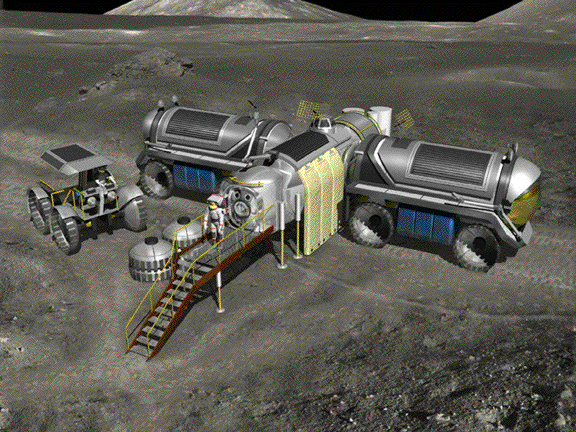
On December, 19th 1972 Apollo 17 splashed down into the Pacific. This ended the last and very successful Apollo program. Since then, mankind has reached no farther out than to low earth orbit. Think about it: the international space station ISS is roughly a thousand times closer to earth then the moon is!
Reaching the moon is complicated and it also is very risky compared to the ISS. The ISS is inside earth geomagnetic field, relieving NASA of most worries about cosmic radiation. It can quickly be evacuated in case of emergency. And, and, and …
But NASA is now up to this challenge. As announced by president Bush on January, 14th, 2004, the “Vision for Space Exploration” calls for returning humans to the moon by 2020. Unfortunately, the president’s announcement was not coupled with a major NASA budget increase, so the effort is even more challenging (and unfortunately eating up on the scientific budget, which is under much criticism).
While the 2020 deadline will probably not be met, NASA is very serious about going to the moon. Under the so-called “Constellation” program, new rocket boosters (Ares I and Ares V) as well as a new crew vehicle (Orion) will be developed. Initially, they will be used to ferry humans to the international space station (read my article “Orion as a Space Shuttle Successor“). For that, the Orion capsule as well as the Ares I rocket needs to be ready. Work on both of them is under way with an Ares I test flight being planned for 2009 (the 2009 date is already a departure from the schedule).
 The ultimate goal of the moon flights is to set up a permanent moon base – an undertaking that sound complicated, but doable with current and upcoming technology.
The ultimate goal of the moon flights is to set up a permanent moon base – an undertaking that sound complicated, but doable with current and upcoming technology.
After that, NASA shall go and send humans to Mars. This is extra-challenging and requires a number of very good solutions to extremely hard to solve problems. In the very long term, mankind will probably be smart enough to overcome them, but I personally do not expect any immediate results.
I think it is also safe to assume that the new challenges NASA faces will bring up great technology that in the long term also serves all of us down on Earth very well. That new technology will make our everyday life easier and medicine will definitely benefit from research on space radiation. Maybe this technology is the biggest plus of the Constellation program (except, of course, for the inspiration it offers).
So whatever it is – the next years are extremely interesting in astronautics. And, if at all possible, I’ll try to stay on top of the news with my blog!

I read it before but I didn’t have time to comment it. Now, I read it again. It’s very interesting. Good work.
Cheers, Armando.
Hi Armando,
thanks for the nice words. I hope that who enjoyed reading my launch trip report also is interested in NASA going to the moon.
I have to admit that I initially thought this would not be of any interest for at least the next six years to come – when I discovered that the first test flights are not far away. In fact, now is probably the most interesting phase of the whole moon program, with all this exciting new hardware being developed. And writing about it helps me understand what’s going on. Even better if I can also find some readers because, as you know: comments are what helps you keep on track!
Rainer
Hi Rainer
I had heard that the Russians were planning on establishing a permanent moon base before 2034. Have you heard anything about this?